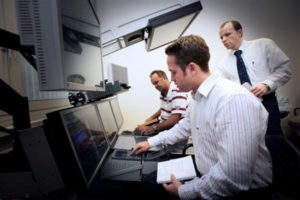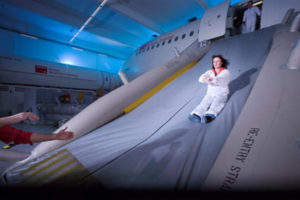Swiss Aviation Training Aircraft Maintenance, Pilot and Cabin Crew Training

Swiss AviationTraining (SAT) is a Swiss-based company that specialises in providing initial and further training and instruction for commercial pilots, cabin personnel and aircraft mechanics. The company, which is a fully-owned subsidiary of Swiss International Air Lines, can draw on extensive industry expertise. Located beside Zurich Airport, SAT has a workforce of some 300 employees.
Aircraft maintenance training
SAT offers type training courses and customised maintenance training for various aircraft types including the Embraer 170/190 family, the Embraer ERJ 135/145 series, the BAe146/Avro RJ series and the Saab 2000. The corresponding certificates are recognised by numerous aviation authorities including the EASA, China’s CAAC, Australia’s CASA and the US Federal Aviation Administration.
Maintenance personnel human factors training
SAT’s human factors training courses for maintenance personnel adopt the innovative STAMINA training method developed by Trinity College Dublin and others. The training, which covers the EASA Part 66/145 syllabus, consists of a basic course lasting 2 to 2½ days and a continuation course of 1 to 2 days.
Flexible web-based aerospace training
SAT also offers LMS, a web-based training system that supports any type of aerospace training course. With its easy and always-identical access to any selected course at any time, LMS enables students to learn at their own pace, taking as much or as little time as they need.
Pilot training
SAT is a fully-licensed Flight Training Organization/Type Rating Training Organization (FTO/TRTO), is approved by JAA/EASA and FOCA and is further approved for Embraer 170/190 training by the FAA, CASA, CAAC and GACA. Its type-specific pilot training courses are carefully tailored to each customer’s needs and draw on a wide range of facilities including Airbus A319/320/321, Airbus A330/340, Embraer ERJ145, Embraer 170/190 and Boeing MD-83 full-flight simulators.
Cabin crew training
SAT provides cabin crew training which fully complies with all EU-OPS requirements. The courses offered extend to initial, type conversion, recurrent and crew resource management (CRM) training for various aircraft types, and include emergency, safety, medical and service procedures.
Human factors and CRM training
Human factors and crew resource management (CRM) training are a further key focus at SAT. The courses offered in these vital areas of any airline’s operations include train-the-trainer programmes, basic human factors training, crew resource management (CRM), multi-crew cooperation (MCC) and human factors training for maintenance personnel.
Products and Services
Video
White Papers
Related Projects
Press Release
The Swiss Federal Office of Civil Aviaton (FOCA) has confirmed the EASA Part 147 approval of Swiss Aviation Training as a provider of maintenance type rating training for the Bombardier CRJ100/200 and CRJ700/900 aircraft types. These latest EASA approvals will enable Swiss Aviation Trai
Read moreSwiss AviationTraining now offers fuel tank safety training for aviation maintenance personnel via its new Learning Management System elearning facility, which it has developed in collaboration with infoWERK Multimedia GmbH. The new courses are available via the Swiss AviationTraining w
Read moreRegional Offices
P.O. Box
CH-8058 Zurich Airport
Other
Switzerland














